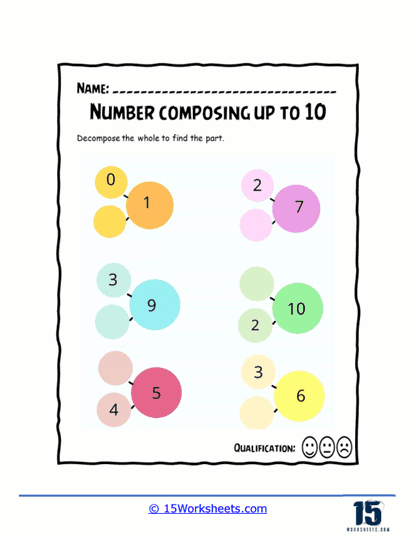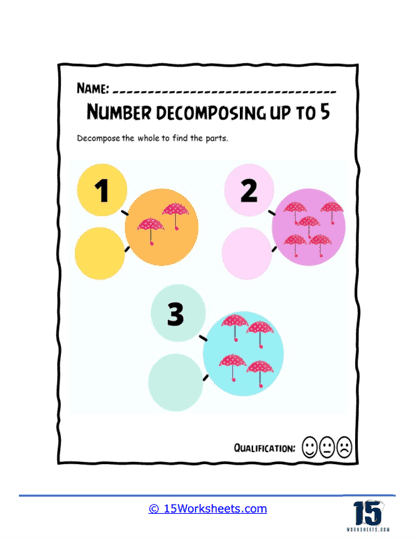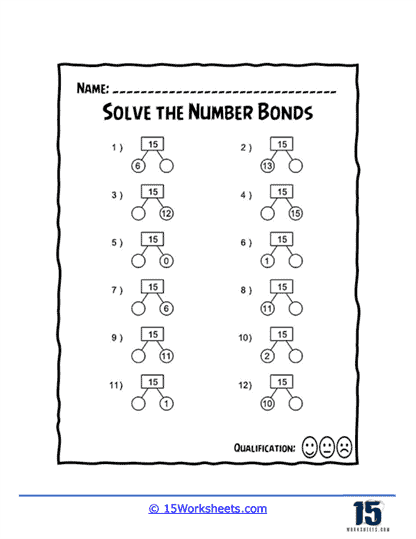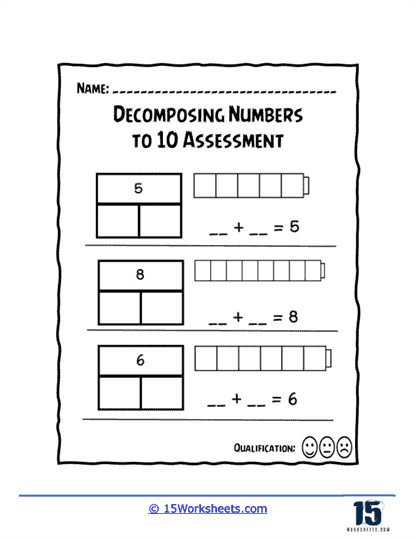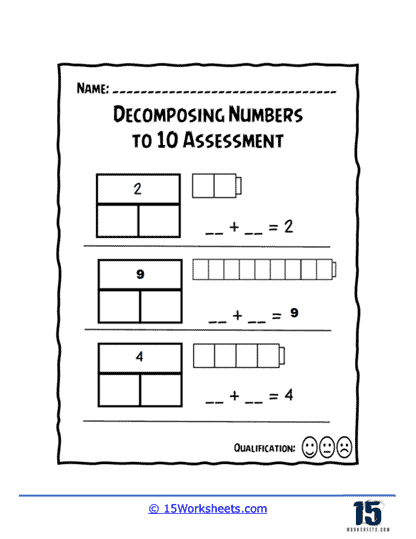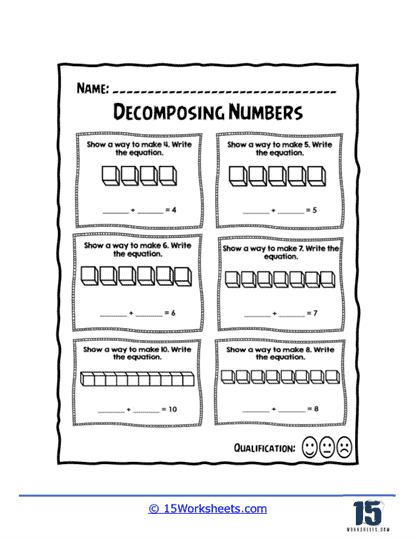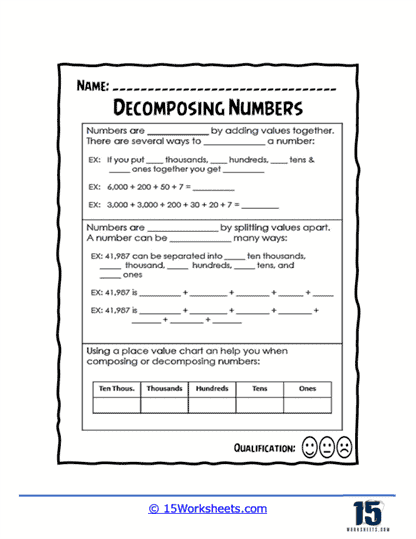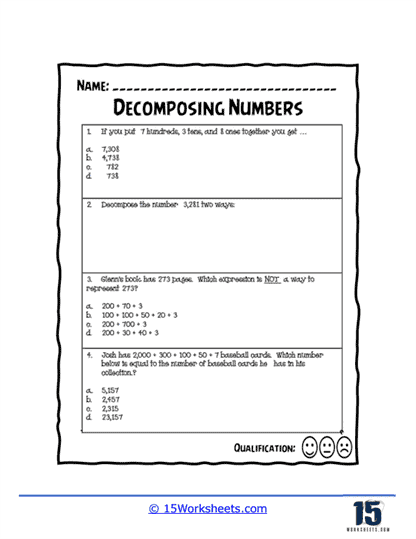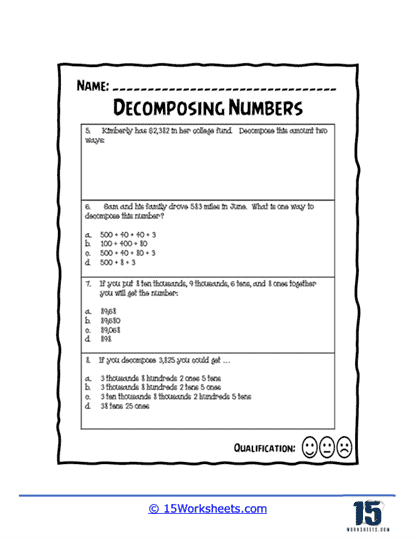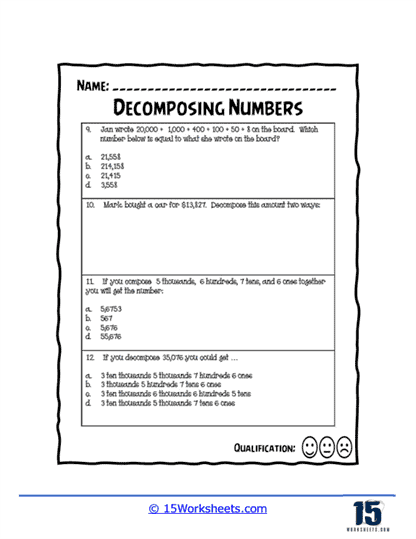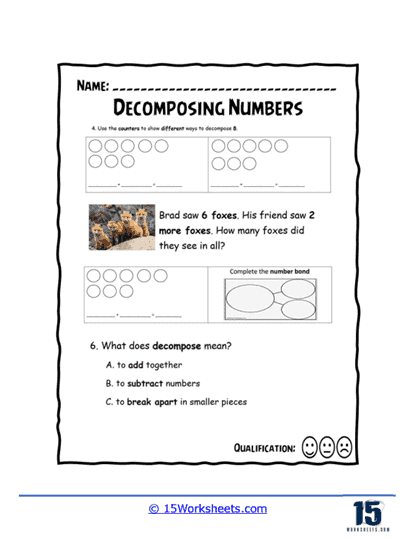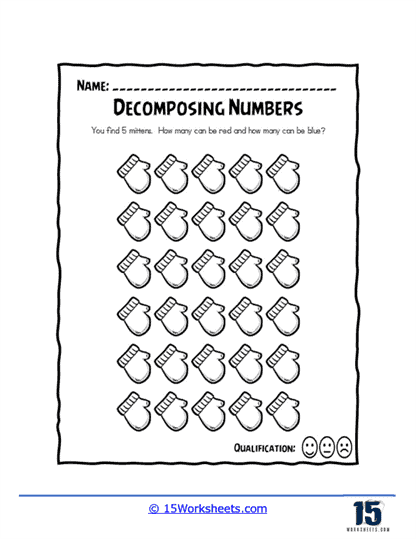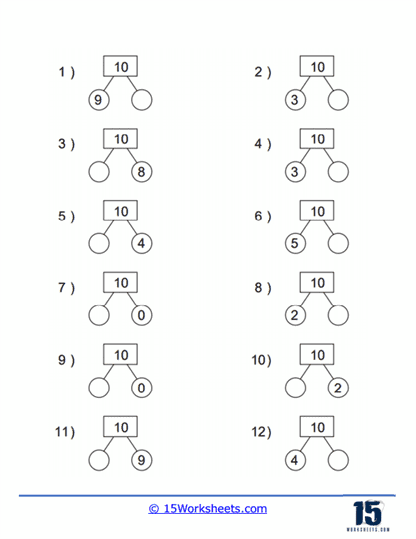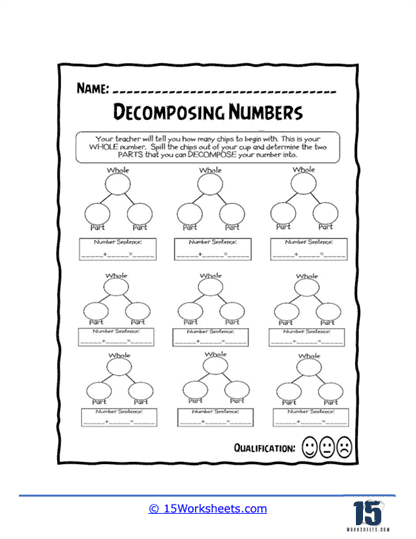Decomposing Numbers Worksheets
About These 15 Worksheets
These worksheets provide students practice in breaking down or splitting numbers into their individual components or place values. These worksheets aim to enhance understanding of numbers, strengthen problem-solving skills, and facilitate calculations involving addition, subtraction, and other mathematical operations.
To grasp the concept of decomposing numbers, it’s important to have a basic understanding of place value. In our number system, each digit in a number holds a specific place value. The value of a digit depends on its position or place in the number. For example, in the number 362, the digit 3 represents 300 (3 hundreds), the digit 6 represents 60 (6 tens), and the digit 2 represents 2 (2 ones).
In these sheets you will be presented with numbers and require students to break them down into their respective place values. For instance, given the number 532, students are asked to determine the value of the hundreds, tens, and ones place. In this example, the number 532 is decomposed into 500 (5 hundreds), 30 (3 tens), and 2 (2 ones).
These worksheets will also provide numbers in expanded form and ask students to combine them to form the original number. For example, given the hundreds, tens, and ones values (300, 50, 9), students are tasked with combining them to determine the complete number (359).
A Look At The Individual Worksheets
In the whimsical world of numbers, nothing is more satisfying than taking something whole and breaking it into perfectly logical little pieces-like turning a giant cookie into equal shares or discovering that 10 is really just 7 + 3 in disguise. That’s where Decompose Number, Learning About Decomposing, and Whole to Parts come in. These foundational worksheets are like math’s version of a treasure map-guiding students to discover the hidden pieces inside whole numbers. Instead of just saying “7,” students learn it could be 5 + 2, 6 + 1, or even 3 + 4-if the number’s in a good mood. These sheets build the basic mental muscles for decomposing and pave the way for deeper number sense.
Things get even more imaginative with a burst of visual flair. Umbrellas That Break drops broken umbrellas from the math sky, leaving students to sweep up the number fragments like little numerical detectives. Blue Mittens and Red and Yellow Numbers keep the theme going-because apparently, mittens and primary colors are the new frontier in mathematical thinking. These worksheets link numbers with colors, patterns, and quirky visuals to help young learners “see” decomposition in action. When you’re figuring out that 8 is just 2 red dots and 6 yellow ones, you’re not just solving problems-you’re entering math’s cozy craft corner.
Now that the students are thoroughly charmed by umbrellas and mittens, it’s time to hit the toolbox. Using Blocks takes them into the world of manipulatives, where ones and tens are stacked like tiny digital LEGO towers. Solve the Number Bonds shows numbers in little relationship bubbles-think speed dating for math: “Hello, I’m 9. You must be 4 and 5?” Then there’s Integer Makeups, which dares students to come up with every possible way to construct a number. These worksheets give kids control over how numbers can be rearranged, which is kind of like letting them remix their favorite math songs-now featuring bonus tracks.
But what’s learning without a little challenge? How Many Ways kicks off the creative explosion by asking students to list as many decompositions as possible. It’s like a math improv night: “Give me a number and three different ways to break it apart!” Then, just when students think they’ve mastered it all, Decomposing Numbers Quiz and Multiple Choice arrive with their clipboard and red pen-though let’s be honest, the multiple choice answers are sometimes delightfully sneaky. These worksheets test knowledge but never lose their sense of fun, proving that assessment doesn’t have to be scary-it can even be a little silly.
For those who love a good review session (or need one after accidentally saying 7 = 4 + 1), there’s Skill Review, Decomposing to 10, and Fill in the Circles. These worksheets bring it all together: part warm-up, part wind-down, and all reinforcement. Whether students are finishing missing pieces in a circle puzzle or just reviewing every way to make 10, these exercises are a gentle reminder that math isn’t just about getting it right-it’s about seeing numbers from every possible angle. Because in the end, decomposing numbers isn’t just arithmetic-it’s a small act of curiosity, creativity, and quiet power.
What Are Decomposing Numbers?
Decomposing numbers refers to the process of breaking down a number into its individual components or place values. It involves analyzing the value of each digit in a number and understanding how they contribute to the overall value of the number. By decomposing numbers, we can better understand their structure, manipulate them more easily, and perform various mathematical operations with greater accuracy.
Let’s take a deep example to illustrate the concept of decomposing numbers:
Consider the number 463.
To decompose this number, we examine its digits and determine their place values:
The digit 4 is in the hundreds place, representing 4 hundreds or 400.
The digit 6 is in the tens place, representing 6 tens or 60.
The digit 3 is in the ones place, representing 3 ones.
So, by decomposing the number 463, we can express it as the sum of its place values: 400 + 60 + 3.
This breakdown allows us to see the individual contributions of each digit to the total value of the number. In this case, the number 463 is composed of 4 hundreds, 6 tens, and 3 ones.
By decomposing numbers, we can perform various mathematical operations more easily. Let’s explore a few examples:
Addition: Suppose we want to add 463 and 289.
We can decompose each number into their place values:
463 = 400 + 60 + 3
289 = 200 + 80 + 9
Now, we can add the corresponding place values:
(400 + 200) + (60 + 80) + (3 + 9) = 600 + 140 + 12 = 752
So, the sum of 463 and 289 is 752.
Subtraction: Let’s subtract 289 from 463.
Again, we decompose the numbers:
463 = 400 + 60 + 3
289 = 200 + 80 + 9
Now, we perform the subtraction for each place value:
(400 – 200) + (60 – 80) + (3 – 9) = 200 – 20 – 6 = 174
Therefore, 463 minus 289 equals 174.
Multiplication: Consider multiplying 463 by 5.
By decomposing 463, we have:
463 = 400 + 60 + 3
Now, we multiply each place value by 5:
(400 * 5) + (60 * 5) + (3 * 5) = 2000 + 300 + 15 = 2315
Hence, 463 multiplied by 5 equals 2315.
Decomposing numbers allows us to break down complex calculations into simpler parts, making them more manageable and aiding in understanding the underlying structure of numbers. It is a valuable skill that helps in various mathematical operations, problem-solving, and building a strong foundation for advanced concepts in mathematics.

